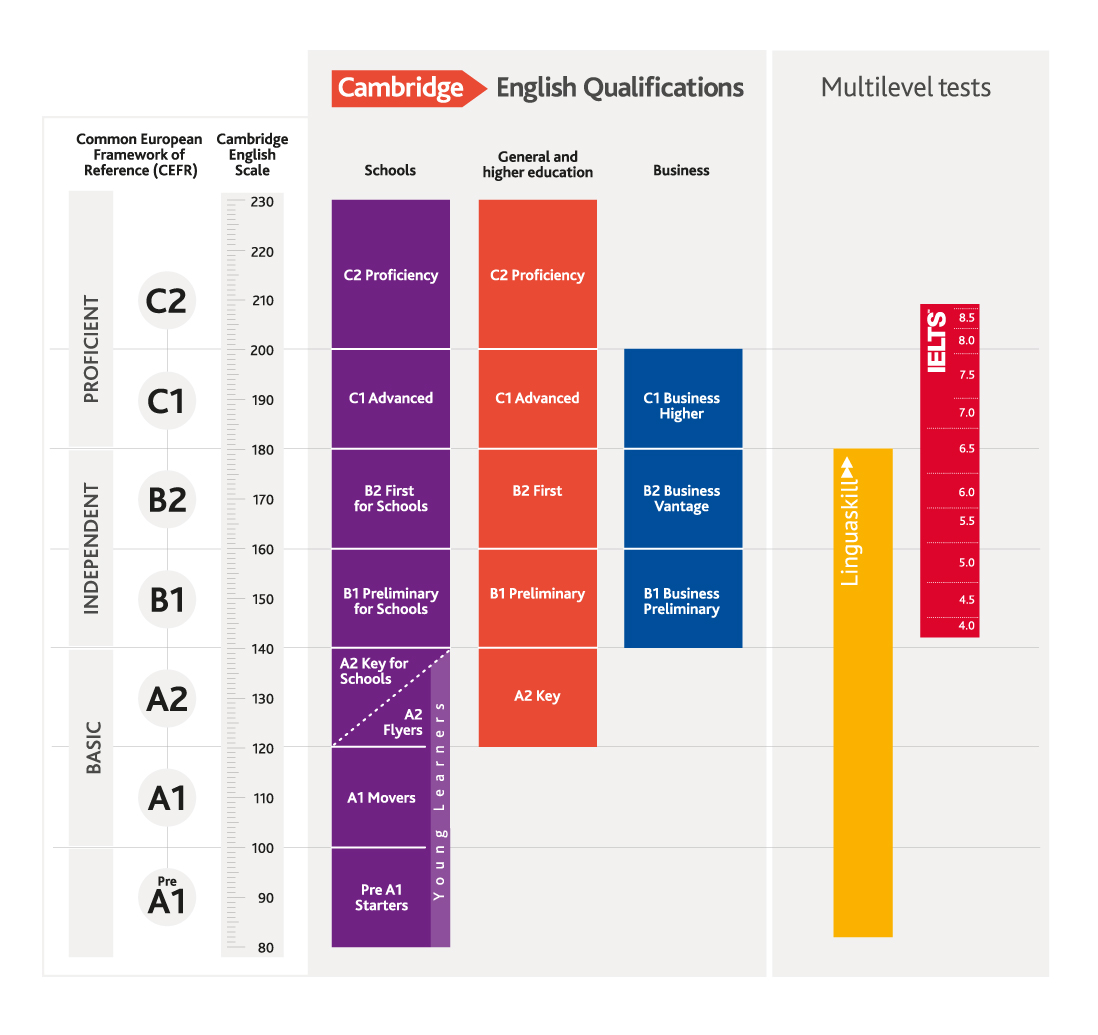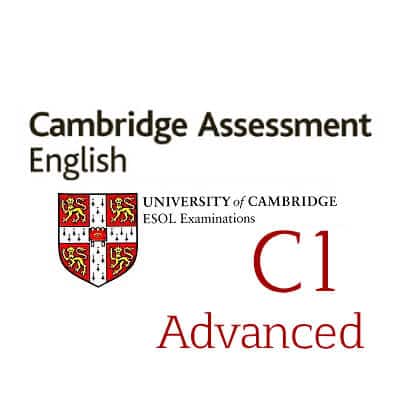
Irena Popova
Teacher
Cambridge Assessment CEFR level
Common European Framework of Reference (CEFR)
The Common European Framework of Reference for Languages (CEFR) is an international standard for describing language ability. It describes language ability on a six-point scale, from A1 for beginners, up to C2 for those who have mastered a language. This makes it easy for anyone involved in language teaching and testing, such as teachers or learners, to see the level of different qualifications. It also means that employers and educational institutions can easily compare our qualifications to other exams in their country.

English B2 (FCE)
Level B2: upper independent English level
Level B2 corresponds to a more advanced, more independent level than previous levels. A B2 user can communicate easily and spontaneously in a clear and detailed manner. This is not yet an experienced speaker, but a B2 user is able to understand and be understood in most situations. It is this level, in particular, that is necessary to integrate a North American university, even a school of great European renown. But it is also the B2 level that is generally required to work or do an internship abroad in most English-speaking countries. Generally, the user can feel a real progress when the B2 level is reached. This intermediate level marks an important break with those preceding. A B2 user can express himself naturally, easily and effectively and take the initiative to speak. But he is also able to understand and correct his own mistakes, foresee what he will say and how he will say it.
Your success depends on your prior preparation and practice. The combination of the two will help you get the desired score on any language Test.
Once you have passed all four exam parts of your language test with the proficiency level 4, your “report card” counts as a language certificate needed for admission to nearly all subjects and degrees at colleges and universities.
English C1
Why to take C1 Advanced (CAE)?
Cambridge C1 Advanced (CAE) is an official Cambridge English examination at an advanced level requiring competence in all the language skills, set at level C1 of the Council of Europe's Common Framework of Reference for Languages.
What is Cambridge C1 Advanced (CAE)?
C1 Advanced (CAE) is recognised as entry or school-leaving qualification at various educational levels (e.g. KV M-Profile, Gymnasium, institutions of higher education etc.). Many companies today require C1 Advanced (CAE) as the minimum requirement in regard to English language competence which makes C1 Advanced (CAE) a qualification beyond the general requirements, helping successful candidates to differentiate themselves from other applications in their search for employment. There are many companies and corporations in Switzerland who recognise C1 Advanced (CAE) as a qualification demonstrating very good language competence.












